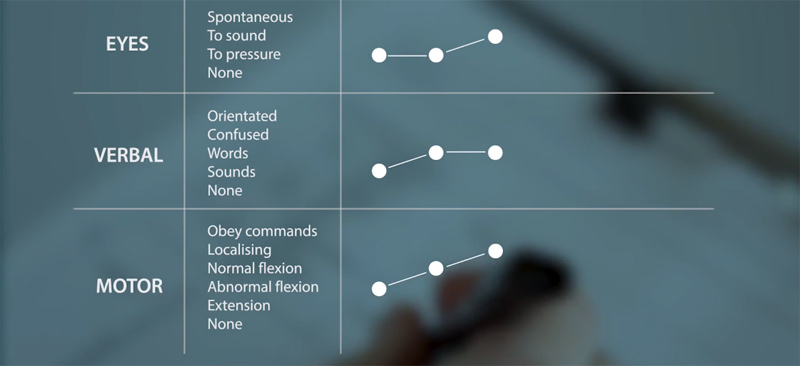Recording the Glasgow Coma Scale

Serial findings should be documented on a coma scale chart. The observations can then be clearly communicated and the trends rapidly appreciated so that any improvement or deterioration in a patient's condition can be seen. Deterioration in a patient's condition should precipitate urgent medical review in order to identify any remediable factors that have contributed to this change. This assessment may include performing cranial imaging (usually computed tomography (CT)) to identify problems such as haematomas, contusions or brain swelling.
In addition to plotting trends on a coma scale chart, a patient's ratings can be documented numerically as a short hand aid to quickly record findings (e.g. E2V4M6). However, when describing the patient always use the full criteria alongside the numbers to ensure that the assessment is accurately understood.
The short hand numbers can also be added together to give a total Coma Score (e.g. E2V4M6 = 12). This provides an overview summary of the severity of the patient's condition, but this score does not communicate the more informative detailed description of each response, which should always be used in addition to the score in clinical care of an individual patient. It is important to note, for example, that a total score of 8 could be E2V2M4 or E1V1M6, with very different implications for the severity of the patient's condition.
